 |
King of Chemicals Manufacturers |
Specifications, Properties, Uses, SDS of Croscarmellose Sodium USP NF BP Ph Eur JP EP IP Grade Manufacturer Supplier Exporter Wholesale & Small Packs, CAS Number 74811-65-7. |
|
| King of Chemicals has several associated companies having accreditations like cGMP, GLP - FDA Approved Good Manufacturing Practice and Good Laboratory Practice of WHO standard, ISO-9001, ISO-14001, ISO/IEC 17025, ISO ISO-45000, HACCP, FSSC 220000, FSSAI, "REACH" Registered, Kosher & Halal Certified. e-CTD and DMF support can be made available if needed. We offer USP NF BP Ph Eur EP IP JP Analytical Reagent FCC Food Grade Chemicals & Nutraceuticals. | |
        |
|
Muby Chem Pvt. Ltd. is a several decades old group of companies, engaged in manufacturing, supplying, distributing, wholesale supplies of Croscarmellose Sodium USP NF BP Ph Eur JP EP IP Grade for actual users, including retail or small pack supplies for research and development work.
We supply fine and speciality chemicals, pharmaceutical excipients, mineral fortifiers in chemically pure, analytical reagent grade, IP BP USP Ph Eur EP JP and other pharmaceutical grade monograph including FCC Food grade chemicals and Nutraceuticals at best prices. We and/or our associated units have all the facilities to supply as per cGMP standard observing good manufacturing practice and good laboratory practice. We can assure low microbial count and also offer a test certificate for the same. We maintain warehouses across USA, India, and UAE. Our group exports to USA, Canada, Mexico, Argentina, Brazil, Chile, Korea, Malaysia, Thailand, Indonesia, Europe, and several other parts of the world. We supply in wholesale container loads to small pack of few grams. Solid products may be specified for it size and shape as desired by the buyer.


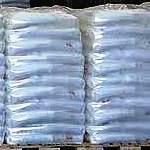
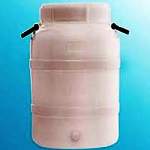
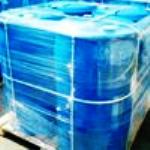
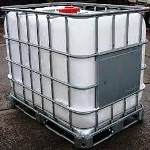
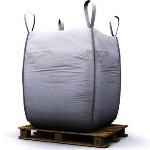
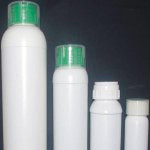
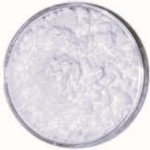
Croscarmellose Sodium CAS Number 74811-65-7
For Properties Specifications Uses of Croscarmellose Sodium Click Properties, Specifications, Uses, Price, Process of Croscarmellose Sodium Manufacturer.
For For SDS MSDS Sheet of Croscarmellose Sodium Click SDS Safety Data Sheet MSDS Sheet of Croscarmellose Sodium Manufacturer.
The Properties, Specifications, Monograph and Uses of Croscarmellose Sodium:
odium croscarmellose is an internally cross-linked sodium carboxymethylcellulose for use as a superdisintegrant in pharmaceutical formulations. It appears as white, fibrous, free-flowing powder, and is used commonly as an FDA-approved disintegrant in pharmaceutical manufacturing. E468 is the E number of crosslinked sodium carboxymethyl cellulose, used in food as an emulsifier.
Specifications of Croscarmellose Sodium USP NF Grade:
DEFINITION
Croscarmellose Sodium is the sodium salt of a cross-linked, partly O-(carboxymethylated) cellulose.
IDENTIFICATION
A. Mix 1 g with 100 mL of methylene blue solution (1 in 250,000), stir the mixture, and allow it to settle. The Croscarmellose Sodium absorbs the methylene blue and settles as a blue, fibrous mass.
B. Mix 1 g with 50 mL of water. Transfer 1 mL of the mixture to a small test-tube and add 1 mL of water and 5 drops of 1-naphthol. Incline the test tube, and carefully add 2 mL of sulfuric acid down the side so that it forms a lower layer: a reddish-violet color develops at the interface.
Residue on Ignition: 14.0 to 28.0%, calculated on the dried basis. Use 1.0 g for the test and use sufficient sulfuric acid to moisten the entire residue after the initial charring step, and additional sulfuric acid if an excessive amount of carbonaceous material remains after the initial complete volatilization of white fumes.
Sodium Chloride and Sodium Glycolate: To pass the test.
Acceptance criteria: The sum of the percentages of sodium chloride and sodium glycolate is NMT 0.5%.
Content of Water-Soluble Material: To pass the test.
Acceptance criteria: NMT 10.0%.
Degree of Substitution: To pass the test.
Acceptance criteria: The degree of substitution is 0.60–0.85 on the dried basis.
Loss on Drying: Dry at 105C for 6 h.
Acceptance criteria: NMT 10.0%
Microbial Enumeration Tests and Tests for Specified Microorganisms: The total aerobic microbial count does not exceed 1000 cfu/g, and the total combined molds and yeasts count does not exceed 100 cfu/g. It meets the requirements of the test for absence of Escherichia coli.
pH: Mix 1 g with 100 mL of water for 5 min.
Acceptance criteria: 5.0–7.0
Settling Volume: To pass the test.
Acceptance criteria: The volume of the settled mass is 10.0–30.0 mL.
Packaging and Storage: Preserve in well-closed containers. No storage requirements specified.
Specifications of Croscarmellose Sodium BP Ph Eur Grade:
Action and use: Excipient.
DEFINITION
Cross-linked sodium carboxymethylcellulose.
Sodium salt of a cross-linked, partly O-carboxymethylated cellulose.
CHARACTERS
Appearance: White or greyish-white, hygroscopic powder.
Solubility: Practically insoluble in acetone, in anhydrous ethanol and in toluene.
IDENTIFICATION
A. Mix 1 g with 100 mL of a solution containing 4 ppm of methylene blue, stir the mixture and allow it to settle. The substance to be examined absorbs the methylene blue and settles as a blue, fibrous mass.
B. Mix 1 g with 50 mL of water. Transfer 1 mL of the mixture to a small test-tube and add 1 mL of water and 0.05 mL of a freshly prepared 40 g/L solution of α-naphthol in methanol. Incline the test-tube and carefully add 2 mL of sulfuric acid down the side so that it forms a lower layer. A reddish-violet colour develops at the interface.
C. To the residue obtained in the test for sulfated ash add 1 mL of hydrochloric acid and evaporate on a water-bath. Take up the residue in 20 mL of water. The solution gives reaction of sodium.
TESTS
pH: 5.0 to 7.0 for the suspension.
Shake 1 g with 100 mL of carbon dioxide-free water for 5 min.
Sodium chloride and sodium glycollate: Maximum 0.5 per cent (dried substance) for the sum of the percentage contents of sodium chloride and sodium glycollate.
Water: soluble substances: Maximum 10.0 per cent.
Loss on drying: Maximum 10.0 per cent, determined on 1.000 g by drying in an oven at 105C for 6 h.
Sulfated ash: 14.0 per cent to 28.0 per cent (dried substance), determined on 1.0 g.
Microbial contamination:
TAMC: acceptance criterion 1000 CFU/g.
TYMC: acceptance criterion 100 CFU/g.
Absence of Escherichia coli.
Settling volume: Place 75 mL of water in a 100 mL graduated cylinder and add 1.5 g of the substance to be examined in 0.5 g portions, shaking vigorously after each addition. Dilute to 100.0 mL with water and shake again until the substance is homogeneously distributed. Allow to stand for 4 h. The settling volume is between 10.0 mL and 30.0 mL.
Degree of substitution: 0.60 to 0.85 (dried substance).
We supply Croscarmellose Sodium JP EP IP Grade.
The MSDS-SDS Hazard Statement of Croscarmellose Sodium:
Croscarmellose Sodium or Sodium Croscarmellose SDS, Safety Data Sheet
MSDS Sheet, Material Safety Data Sheet 24-March-25
Section 1: Chemical Product and Company Identification
Product Name & Other Names: Croscarmellose Sodium or Sodium Croscarmellose.
CAS Number: 74811-65-7
EINECS EC Code: 1312995-182-4
Relevant uses and uses advised against (if any): Industrial use.
Section 2: Hazards Identification
GHS, Globally Harmonized System Classification in accordance with 29 CFR 1910
Hazard Class and Category Code(s), Regulation (EC) No 1272/2008 (CLP)
Not a hazardous substance or mixture according to Regulation (EC) No. 1272/2008.
This substance is not classified as dangerous according to Directive 67/548/EEC.
Labeling Regulation EC 1272/2008 (CLP) & GHS
GHS Label Elements NONE |
Signal Word: None
Precautionary statements:
P261: Avoid breathing dust/fume/gas/mist/vapors/spray.
P262: Do not get in eyes, on skin, or on clothing.
P281: Use personal protective equipment as required.
P302+P352: IF ON SKIN: Wash with plenty of soap and water.
P304+P340: IF INHALED: Remove victim to fresh air and keep at rest in a position comfortable for breathing.
P305+P351+P338: IF IN EYES: Rinse cautiously with water for several minutes. Remove contact lenses, if present and easy to do. Continue rinsing.
P337+313: If eye irritation persists get medical advice/attention.
Section 3: Composition and Information on Ingredients
Product Name & Other Names: Croscarmellose Sodium or Sodium Croscarmellose.
CAS Number: 74811-65-7
EINECS EC Code: 1312995-182-4
Section 4: First Aid Measures
Always seek medical advice after the first aid treatment.
Skin: Rinse with water. Soap may be used. Seek Medical Aid.
Eyes: Wash eyes with plenty of water for at least 15 minutes, lifting lids occasionally. Seek Medical Aid.
Inhalation: Remove to fresh air. If not breathing, give artificial respiration. If breathing is difficult, give oxygen.
Ingestion: If swallowed, induce vomiting immediately after giving two glasses of water. Never give anything by mouth to an unconscious person.
Section 5: Fire and Explosion Data
Flammability of the Product: Non-flammable.
Products of Combustion: Oxides of Carbon and Sodium.
Fire Fighting Media and Instructions: Use water spray, alcohol-resistant foam, dry chemical, or carbon dioxide. Wear self-contained breathing apparatus for firefighting if necessary.
Special Information: In the event of a fire, wear full protective clothing and NIOSH-approved self-contained breathing apparatus with full face piece operated in the pressure demand or other positive pressure mode. At high temperatures under fire conditions, it may produce toxic or irritating fumes.
Section 6: Accidental Release Measures
Personal precautions, protective equipment, and emergency procedures: Avoid breathing dust/fumes/gas/mist/vapors/spray. Ensure adequate ventilation. Use individual protective equipment (waterproof boots, suitable protective clothing, safety glasses, etc.). Restrict unprotected personnel from the area.
Environmental precautions: Do not let the product enter drains, soil, or water sources.
Methods and materials used for containment Cleanup procedures and Storage: Do not inhale vapors, dust, mist, or gas. Avoid dust formation. Use a shovel to put the material into a convenient waste disposal container.
Section 7: Handling and Storage
Precautions for safe handling: Apply according to good manufacturing and industrial hygiene practices. Ensure proper ventilation. Wash thoroughly after handling. Do not drink, eat, or smoke while handling. Avoid contact with skin, eyes, and clothing. Minimize dust generation. Avoid breathing dust/fumes/gas/mist/vapors/spray. Keep container tightly closed. Avoid ingestion and inhalation. Use individual protective equipment (waterproof boots, suitable protective clothing, safety glasses, etc.).
Conditions for safe storage, including any incompatibilities: Store in cool, dry, and ventilated area away from heat sources and protected from sunlight in tightly closed original container. Keep air contact to a minimum. Do not leave the material container open. Store protected from heat, sparks and ignition sources and incompatible materials. Avoid inhalation of dust/mist/vapor. Do not store with incompatible materials like oxidizing agents, acids.
Section 8: Exposure Controls/Personal Protection
Occupational exposure limits: No exposure limits known for ingredient.
Engineering Controls: Use process enclosures, local exhaust ventilation, or other engineering controls to keep airborne levels low.
Ventilation System: A system of local and/or general exhaust is recommended to keep employee exposures as low as possible.
Personal Respirators (NIOSH Approved): For conditions of use where exposure to dust or mist is apparent and engineering controls are not feasible, a particulate respirator may be worn.
Skin Protection: Wear protective gloves and clean body-covering clothing.
Eye Protection: Use chemical safety goggles and/or full-face shield where dusting or splashing of solutions is possible. Maintain eye wash fountain and quick-drench facilities in work area.
Other Control Measures: Maintain good housekeeping in work area. Handle in accordance with good industrial hygiene and safety practice. Wash hands after handling.
Section 9: Physical and Chemical Properties
Physical state and appearance: White, fibrous, free-flowing powder.
Odor: Odorless.
Odor threshold: Not applicable.
pH: 5.0 ~ 7.0
Relative density: No information found.
Melting point/freezing point: No information found.
Initial boiling point and boiling range: No information found.
Flash point: No information found.
Auto-ignition temperature: No information found.
Decomposition temperature: No information found.
Upper/lower flammability or explosive limits: No information found.
Vapor pressure: No information found.
Vapor density: No information found.
Evaporation rate: No information found.
Flammability (solid, gas): No information found.
Partition coefficient: n-octanol/water: No information found.
Solubility: Slightly soluble in water.
Viscosity: No information found.
Section 10: Stability and Reactivity Data
Stability: It is stable in room temperature in closed containers under normal storage & handling. In fine distribution, when whirled up a dust explosion potential may be assumed.
Conditions of instability: Incompatible materials, Moisture
Incompatibility with various substances: Avoid high temperatures, sparks, open flames, and moisture. Avoid contact with strong oxidizing agents and acids.
Polymerization: Will not occur.
Section 11: Toxicological Information
Acute toxicity: No information found.
Carcinogenic Effects: Not a reported carcinogen by IARC, NTP, ACGIH, OSHA.
Mutagenic Effects: No information found.
Developmental Toxicity: No information found.
Reproductive Effects: No information found.
Section 12: Ecological Information
Toxicity to fish: No information found.
Persistence and Degradability: No data found.
Mobility: No information found.
Bioaccumulation/ Accumulation: No information found.
Results of PBT and vPvB assessment: No information found.
Section 13: Disposal Considerations
Waste Disposal: Waste must be disposed of in accordance with federal, state, and local environmental control regulations.
Section 14: Transport Information
Land Transport DOT USA TDG Canada & ADR/RID Europe: Not controlled.
Sea Transport IMO/IMDG: Not controlled.
Air Transport ICAO/IATA: Not controlled.
Section 15: Other Regulatory Information
USA:
SARA 311/312 Hazards: No SARA hazards.
California Prop. 65 Components: Not listed to cause cancer, birth defects, or any other reproductive harm.
Section 16 - Additional Information
DISCLAIMER: The information and recommendations set forth herein are presented in good faith and believed correct as of the date hereof. It is compiled from various sources, and it is not necessarily all inclusive nor fully adequate in every circumstance. In addition, these suggestions should not be confused with nor followed in violation of applicable laws, regulations, rules, or insurance requirements applicable. This SDS MSDS sheet is intended only as a guide to the appropriate precautionary handling of the material by a professionally trained person using this product. Individuals receiving the information must exercise their independent judgment in determining its appropriateness for a particular purpose. This shall not constitute a guarantee for any specific product features and shall not establish a legally valid contractual relationship. In no case shall our company be liable to loss or damages by the product user.

Croscarmellose Sodium Manufacturers, Suppliers, Exporters, Wholesalers:
King of Chemicals manufacturers

Plot No. 2900/46&47 + 2900/163to167, GIDC, Ankleshwar, Dist. Bharuch, India
India, USA, UAE
TEL: (Office) 91-22-23774610, 91-22-23723564
e-mail: info@kingofchemicals.com
Copyright and Usual Disclaimer is Applicable --- March 24, 2025
If I give you “My Word” Nobody can undo it.
If I sign an “Agreement” my Lawyer will undo it
Our products are for industrial and laboratory use only. The user must test the material before use. We are not dispensing chemists or druggist and do not offer over the counter type (OTC) products for medical use by individuals.
We and our associates manufacture pure chemicals surpassing Monograph Specifications of Analytical Reagent Standards, British & European Pharmacopoeia BP Ph Eur EP Standard, US Pharmacopoeia USP NF Standard, Indian Pharmacopoeia IP Standard, Japan Pharmacopoeia JP Standard, FCC Food Grade Standard. |
|